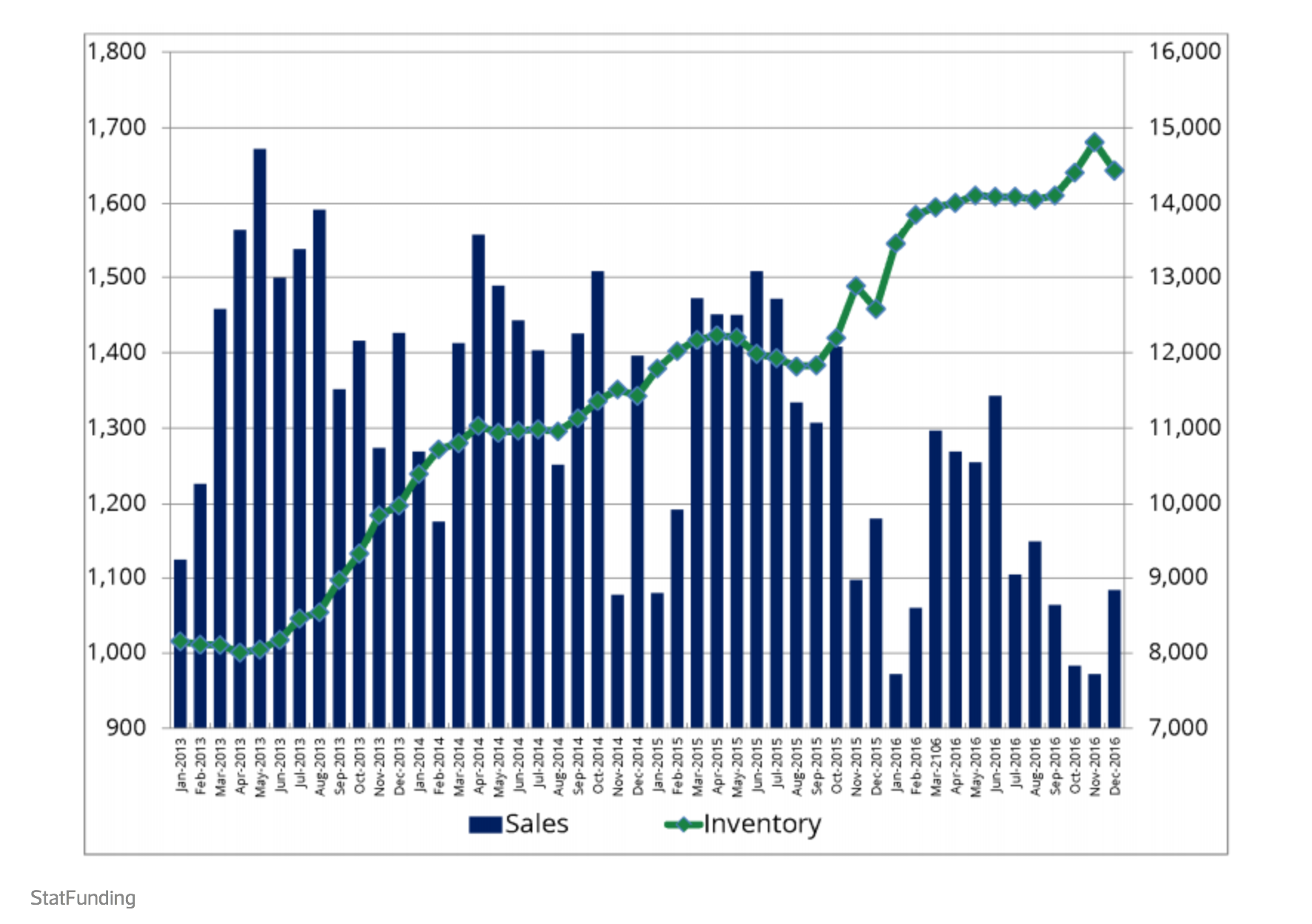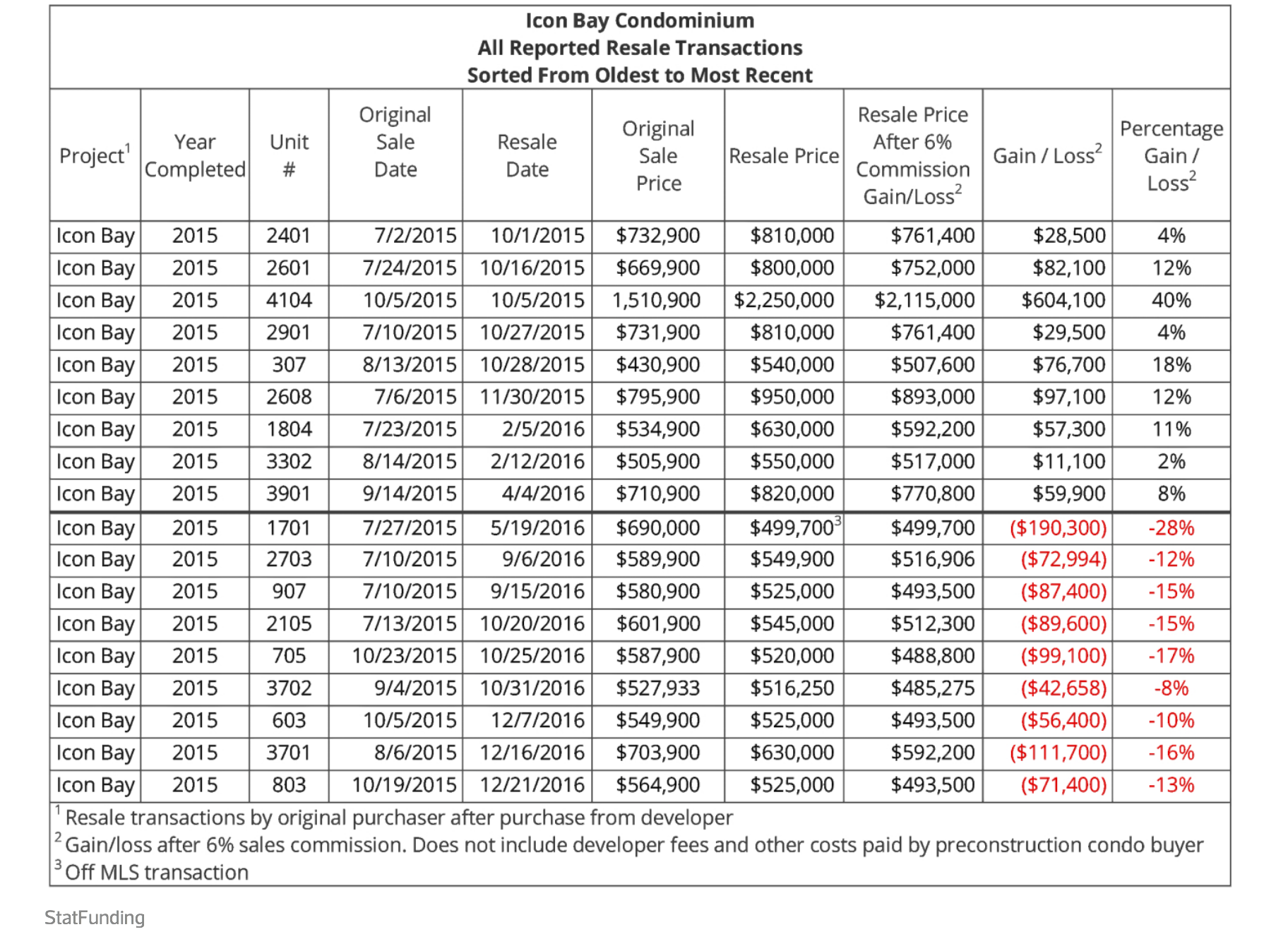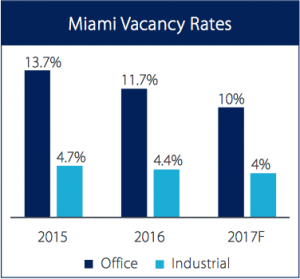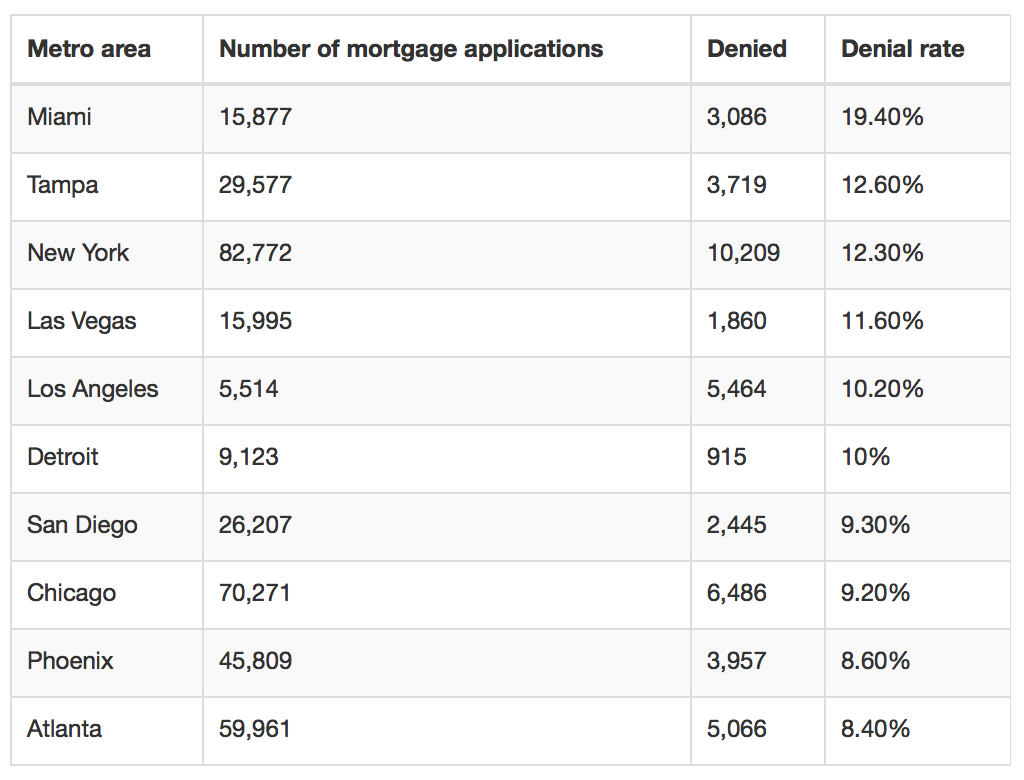Inventory is on the way up and sales look to be slowing as the end of the cycle nears leaving some preconstruction condo investors taking losses on their investments. In a report by StatFunding, they state that the inventory of unsold developer units is increasing while sales have slowed over the past 3 months. 10,000 new units are still under construction and stand to be delivered. In Icon Bay alone, StatFunding found that investors have lost between 8% and 28% and there are 68 of 299 units for sale. Prices in the overall Miami condo market in the same timeframe have pulled back slightly, but remain remarkably stable amid rising Miami and Florida populations and low foreclosure rates.
Florida Median Housing Prices Continue to Rise Through December 2016
Florida's housing market had higher median prices and fewer all-cash sales in December 2016, according to the latest housing data released by Florida Realtors®. Statewide, sales of single-family homes totaled 22,332 during the period, up 0.8 percent year-over-year. Additionally, home sellers were able to get closer to their original asking price, as sellers of existing single-family homes we able to close close to 96% of their original list price. The statewide median sales price for single-family existing homes was $226,000, which was up 9.2% year-over-year. Even townhouses and condos were strong, with sales closing within 94.7% of original list price. The median price for townhouse-condo properties was $166,900, up 7.7% year-over-year. Townhouse-condo sales statewide in December totaled 8,673 closed sales, down 5.2% from last year. There were both fewer short sales and cash-only sales and most closings occurred within 30 to 90 days from initial signed contract. The state of Florida currently has seen a dip to 3.9-month's supply of single-family homes in December and a 6-month supply for townhouse-condos. Florida housing prices for both single-family homes and townhouse-condo properties have risen for 61 straight months.
2016 Foreign Investment Report: Venezuela Leads the Way
Foreign buyers are a major driving force behind the Miami real estate market. In all, foreign buyers spent $6.2 billion in real estate transactions last year in Miami, an increase year over year according to the 2016 Profile of International Homebuyers of Miami Association of Realtors Members. While many reports have warned that foreign purchasing in South Florida is shifting from residential to commercial, this study shows that residential sales amognst foreign home buyers is alive and growing.
South America still leads the list with Venezuela leading the way at 15% share of 2016 foreign residential sales, up 2% from last year. Venezuela is closely followed by Argentina, Brazil and Colombia. Although Argentina leads Brazil, Brazil in-fact spent more over the course of the time period, with Brazilians investing over $400 million in South Florida real estate over that time period. Venezuelans and Brazilians accounted for more in total sales volume in South Florida than all other international buyers combined during the timeframe. Brazilians were also the largest spenders, with the average buy spending $775,000. The average for a foreign buyer in Miami to spend is $570,000. Canadians were second at around $650,000 per investor. In general, Brazil investment has stalled in-terms of growth due to economic and political turmoil in the country while in Venezuela people are trying to escape a three-year plus recesseion. The study was performed in collaboration with MIAMI and the National Association of Realtors between August 2015 to July 2016.
Policy Change in New York City Attracts Miami Developer's Marketing Efforts
Since Attorney General Eric Schneiderman relaxed regulations last spring, out-of-state condo projects approved to be marketed in New York City has shot up, nearly quadrupling in the past 8 months. Previously, due to strict regulation, condo developers had stayed away from marketing in New York. The regulations had been aimed to protect the consumer, but there had been a growing sentiment that unfortunatley the regulation was to keep non-New Yorkers from marketing in the city. Developers were required to file disclosure with the Attorney General's office and local regulators. The rule change allows developers who have had their projects approved by their home state with similar regulations to be approved to market in New York City. Currently there are 41 out-of-state condo projects approved between May and December 2016. Between 2010 and 2015 only 11 out-of-state projects were approved per year.
“It almost seemed like some of the regulations weren’t necessarily geared toward consumer protection, but toward keeping people outside New York from marketing there,” Louis Birdman, the developer behind Zaha Hadid's One Thousand Museum, told Crain's. One Thousand Musuem has been approved to market in New York City. This new effort should help reenergize Miami's stalling condo market with a new wave of capital escaping the cold and highly taxed North East.
Miami Commercial Real Estate Market Outlook Strong Through 2017
Florida's economy will become the 16th largest in the world this year when gross product passes the $1 trillion mark, expected to happen by 2018. Factors driving this force are declining unemployment, declining vacancy rates and strengthening real estate prices. This should keep South Florida's commercial real estate market strong across office space, retail and industrial markets. In Miami the population continues to rise and the city has an unemployment rate of 5.5%. Miami has seen a glut of projects move toward completion and open over the past several years, with several more in the pipeline including Miami WorldCenter, Brickell City Centre and Design District. Despite that commerical vacancy rates in Miami continued to fall and major companies look to expand their footprint in the city including Ernst & Young. Fort Lauderdale & Broward County's unemployment rate is currently 4.6% with continued job growth expected. Office vacancy rates dropped to 9.4% and rental rates are expected to rise to adjust to the falling inventory levels. Opportunities for development in Fort Lauderdale over the next year will be in retail and multifamily projects. Domestic and international investment and interest are expected to remain strong for South Florida though 2017.
Florida was 2nd Fastest Growing U.S. State in 2016
Florida was named the second fastest growing U.S. state by the United States Census, following only Texas. Over 1,000 people moved to Florida per day on average in 2016. Utah, Nevada and Idaho beat Florida on a percentage basis, which ranks fourth at 1.82% population growth. People have been leaving northern states such as Connecticut, which feature high-tax and cold weather. In 2015 Florida took over from New York as the third most populous U.S. state, a gap that is now over 1 million people. In 2016 Florida saw 367,525 people move to the sunshine state to bring the population to 20,612,439.
Miami Leads U.S. Cities in Mortgage Denial Rate at 19.4%
Miami has the highest mortgage denial rate amongst U.S. cities according to Case-Shiller with a 19.4% denial rate. Miami is followed by Tampa Bay, New York and Las Vegas at 12.6%, 12.3% and 11.6% respectively. In Miami 15,887 homebuyers sought a mortgage and 3,086 were denied. These numbers do not include deals in which the mortgage was not actually closed, but merely approved. According to Miami Agent Mag the actual rate of approved and funded mortgages is closer to 61.6%, meaning a denial rate around 38.4%. This looks to stand to get worse as inventory levels and prices rise. Parts of Miami are also still effected by the mortgage market collapse of 2007, and many of these properties do not meet standards for mortgage underwriting. Additionally many residents carry too much debt and/or lack collateral to qualify for a mortgage. In the condo market, a shockingly mere 13 of 9,307 condo buildings in Miami-Dade and Broward counties were approved for FHA loans.
PROFILE Exclusive: Market Update with Demetri Demascus, REALTOR® & Founder of The Demascus Group X SRG
PROFILEmiami had the exclusive opportunity to sit down with Demetri Demascus, a top-producing REALTOR at Spectrum Realty Group as well as an investor and developer in the Miami market, to get his opinion on the fast movement that the Miami real estate market has seen over the last year as well as how to how to navigate uncertain market conditions.
PM: What have you seen over the last year in the Miami real estate market?
DD: The market has been grinding to a halt. Anyone who says it isn't just really is not looking at the data. Yes there are still new projects selling, but even developers topping off their buildings are feeling the pressure from buyers still needing to close on the final 50% or so of their purchase. There are less buyers pulling the trigger; thus, less offers which is starting to pull prices down.
PM: What factors are influencing this?
DD: The world is very different than it was five years ago and many of the economic and political shifts have effected Miami's real estate market. Miami is a haven for a lot of flight capital, meaning as soon a foreign family has money, they are coming to the United States. Safety is their main priority as people escaping foreign countries are looking for safer, more stable investments. They are afraid of keeping their money in unstable economies or in countries with corrupt, unstable governments and politics.
The weakened purchasing power of foreign economies has also directly negatively affected the residential real estate market in Miami-Dade as well as the stronger U.S. dollar, which is making local markets unaffordable. Some investors are also adversely effecting real estate values as they profit off of currency fluctuation and lock in what appear to be losses in real estate for gains in currency.
PM: How do you recommend people navigate the uncertainty?
DD: With crisis comes opportunity. Yes lots of people are worried and upset about the values of their properties, which means they may be feeling the squeeze to sell. What most real estate shoppers do not realize, is that a "buyers market" is actually a bad market. You want to buy when real estate is at its lowest and sell when it is at its highest. Why not take advantage of the low pricing and some of the opportunities that are out there. People who are scared of the "market crash" or who have been effected by unstable foreign markets will sometimes sell their home quick and below market value, giving you the opportunity to cash in on deals that would not otherwise be available. Buy some properties while their value is weak so that you can profit when their value is high.
PM: Are there any neighborhoods that are exciting to work-in as the rest of the market seems to pull back?
DD: Yes, there is always excitement no matter how the economy is. Right now there is a lot going on in Park West and Coconut Grove. Park West is a fairly new neighborhood which is second after Fisher Island when it comes to average monthly rent. It is the area where Museum Park is and includes Marquis Residences, Ten Museum, 900 Biscayne and Marina Blue. This is a young, vibrant group of buildings and residents as well as will only improve as One Thousand Museum and Paramount World Center race towards completion.
Also Coconut Grove is night-to-day. This area has always had pockets of luxury, but the neighborhood got lost in time as Brickell and Miami Beach have cannibalized a lot of the market over the past twenty years. Slowly parts that have ben known as "the hood" have seen many sales close to $1 million and new construction has completely transformed the neighborhood. New restaurants, stores and high-end luxury-condo buildings have . This is surely an area that will continue to grow as it truly is one of the most lush, beautiful, neighborly communities in South Florida.
PM: Do you think South Florida and Miami real estate will continue to grow?
DD: When people look at the market right now they see two major driving factors. One is the weather and landscape. Miami is beautiful because you have the sun, sand, beach, bay, etc. There will always be a desire to live in a major city that offers such an outdoor lifestyle. The second is the attractive cost of prime real estate. No where else in the world right now can you buy such prime real estate for such discounted prices, at times near $400 SF. That is attractive to any investor no matter who you are.
Read our 2017 Market Outlook with Demetri Demascus from July 2016.
Office location: 4141 NE 2nd Ave, STE 106-B Miami FL 33137
About Demetri Demascus & The Demascus Group X SRG:
The Demascus Group X SRG was founded in 2016 to provide our clients with modern, full-service real estate experience. The Demascus Group X SRG provides each client an individualized program tailored to their needs matched with with unprecedented support. Our services range includes sales and brokerage services, investments, property management and portfolio management. We cultivate and maintain strong partnerships with the top real estate attorneys, title companies, contractors, architects, banks and mortgage brokers and give our clients full access to our network to help them succeed. Demetri Demascus has over 8 years of experience in real estate across various markets as a residential and commercial broker, real-estate developer, manager and investor. He has set record prices in Miami working with his clients. Demetri Demascus is a member of the Miami Association of REALTORS and has knowledge in the South Florida Real-Estate Market. He is also the managing partner of Trilogy Partners, a real estate investment firm. Visit Demetri & The Demascus Group X SRG at www.demetridemascusmiami.com.
Miami Falls to 10th in Average 1 Bedroom Rental Prices Amongst U.S. Cities
Miami has fallen to tenth amongst U.S. cities when it comes to most expensive one bedroom rental prices according to Zumper. According to their study Miami has an average rent of $1,800, down .6% from last month and down 3.7% from the same time last year. Two bedrooms have remained stable at $2,500 both year over year and month over month. Seattle passed Miami to 9th after seeing major growth and San Francisco ($3,380), New York ($3,000), and Boston ($2,250) remained the top three although rents in those three cities were down across the board.
Miami Named Top 20 City for Building Wealth
Miami has been named one of the top cities in the United States for building wealth. According to Bankrate, Miami residents have an average debt burden of $25,644 and a 58% home ownership rate. While the chart below shows Miami as the only ranked city with a negative ratio of savable income, Bankrate highlights that Miami was adversely effected by a high population of retirees and older residents who are spending their retirement savings. The rankings also considered average income and expenditures, unemployment rate, education, retirement plans, homeownership rates, price appreciation and non-mortgage debt. Miami continues to be a hotspot for new development and continues to attract new residents and jobs.






















